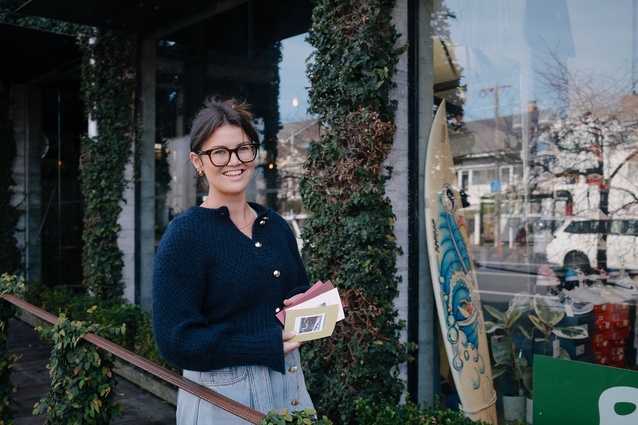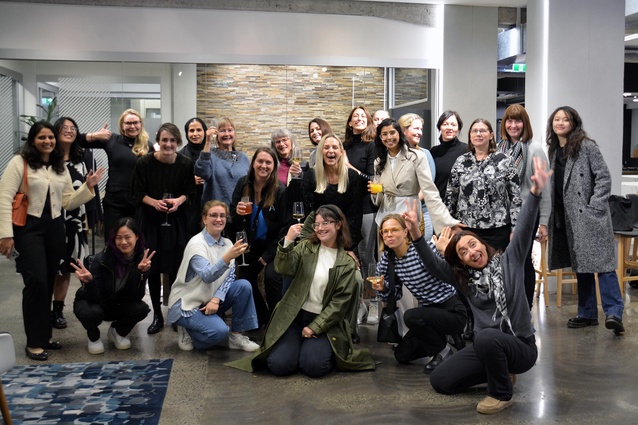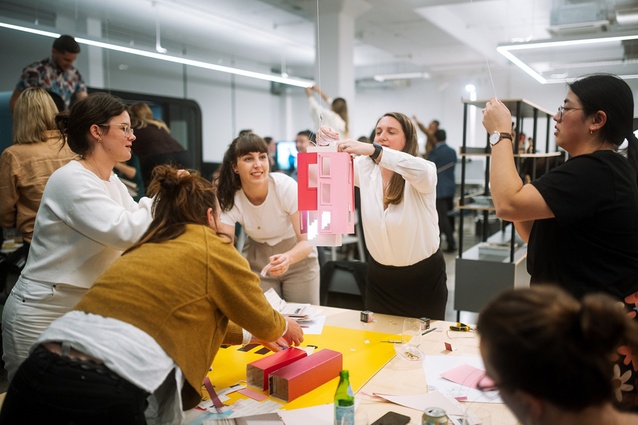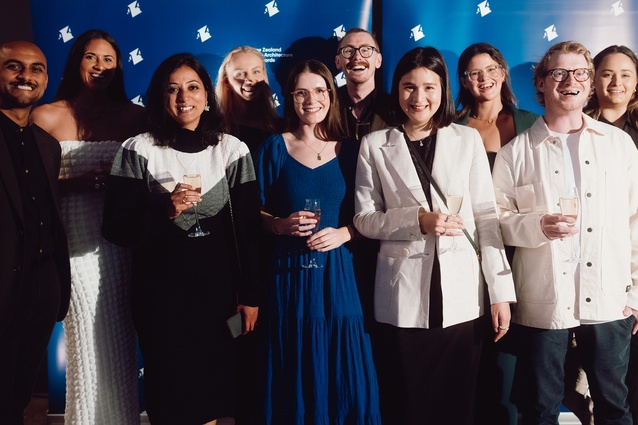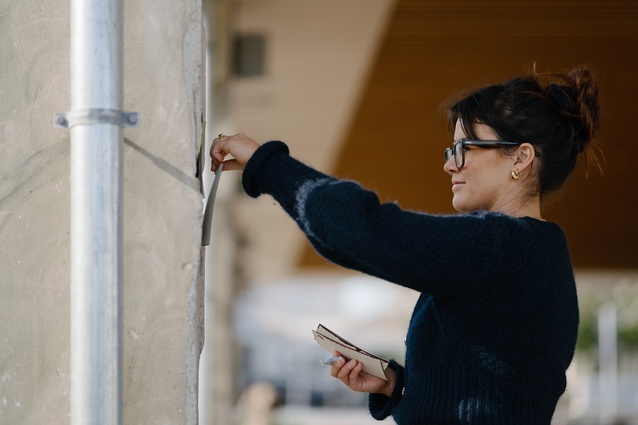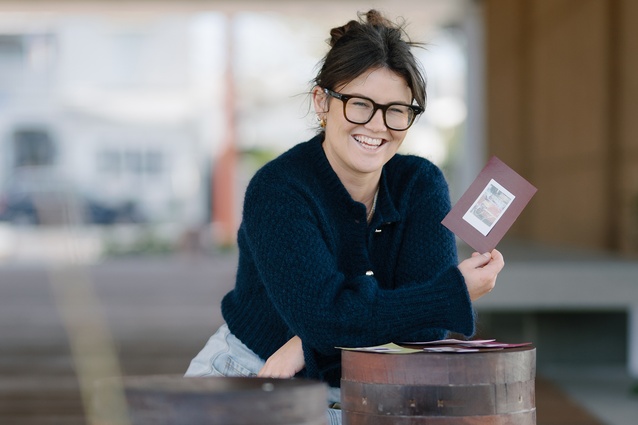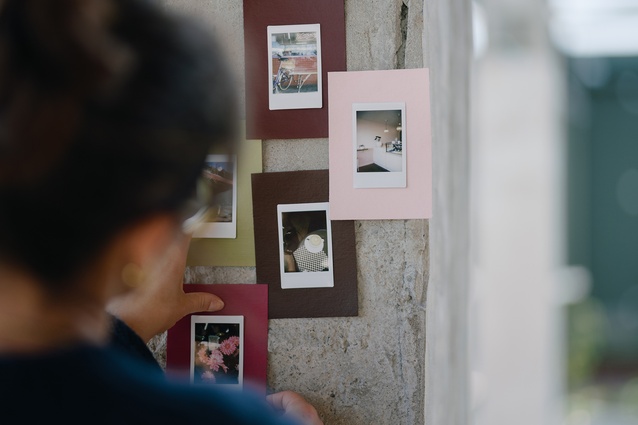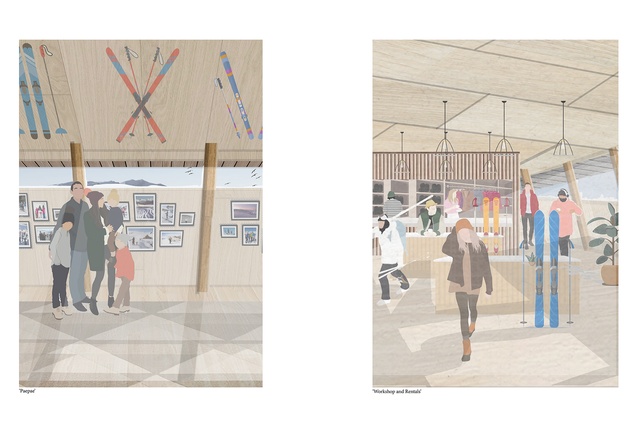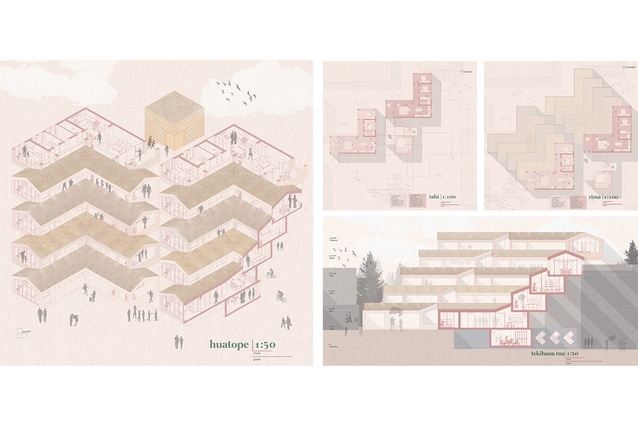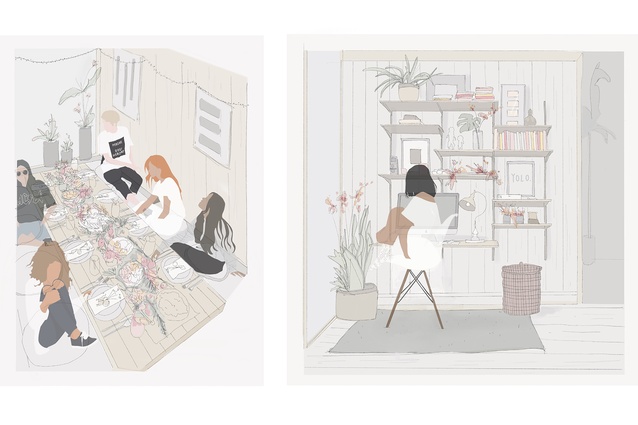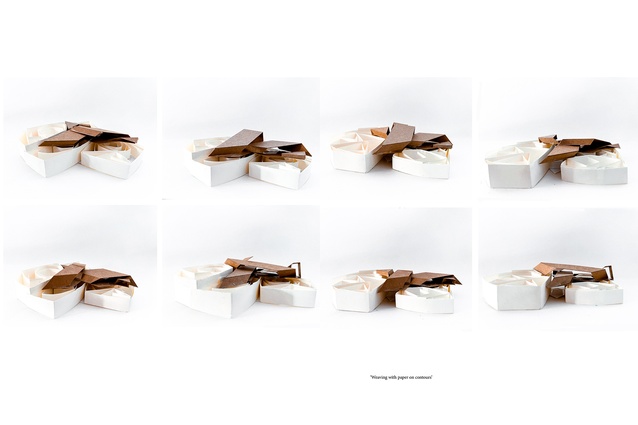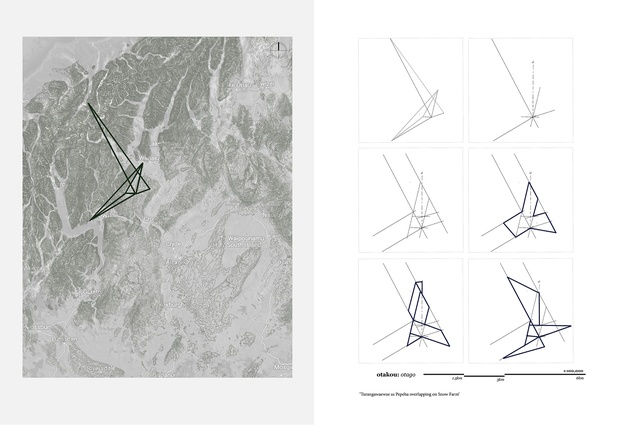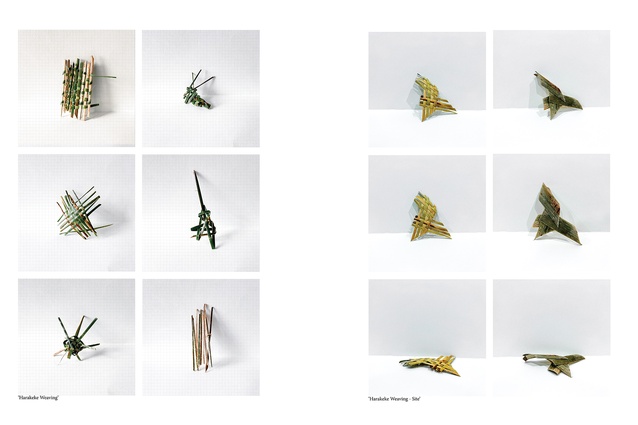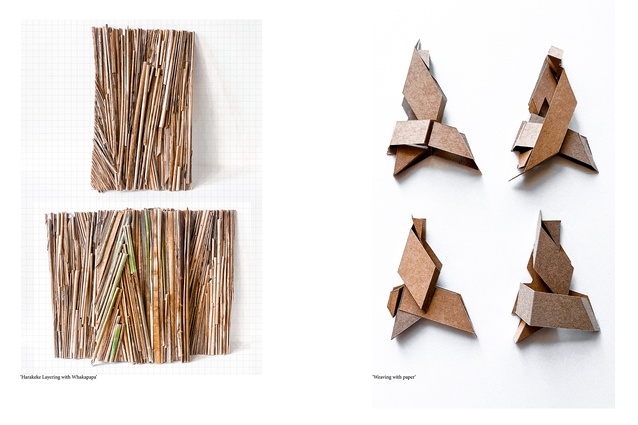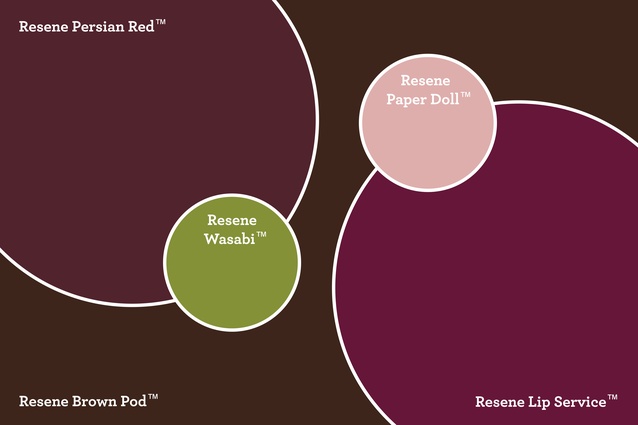On the Rise: Charlotte Dunning
ArchitectureNow’s On the Rise series, supported by Resene, profiles young designers from across the country who are shaping the future of the industry. In this instalment, we talk to graduate architect Charlotte Dunning of Warren and Mahoney’s Auckland studio.
Amanda Harkness (AH): Tell us how you came to be in the world of architecture? Were there any early influences?
Charlotte Dunning (CD): My journey into architecture was shaped from a young age by a family deeply rooted in design and construction. My dad trained as an architectural draughtsman before moving into aluminium façade management and his father was a welder-fitter in Dunedin. On my mum’s side, the forestry industry in northwest Auckland played a big part in our lives — so building, making and understanding how things come together was always part of the dinner time conversation.
I was lucky enough to grow up on a quarter-acre section in a house my dad designed in the ’90s — built by our neighbour, with a backyard big enough for three of us kids and our labrador. My fascination with spaces began early, starting with a Duplo (Baby Lego) set which developed into more detailed and refined spaces on Sims. My parents really nurtured our creativity — we had large pinboards in the garage where my brothers and I could pin up our continuing collection of sketches, paintings and creative works.
By 12, I’d already decided I would start an architecture firm and employ my brothers — I wasn’t exactly sure how to do it, but I was going to call it Building Scarlett… until I discovered Scarlett Architects with the wonderful Lindley Naismith and Jane Aimer already existed! That childhood dream stayed with me, though. Architecture was always more than a career path — it was a way to bring together creativity, family and a love for shaping the spaces we live in.
The real defining moment came at 15, when my dad took me visit to Jasmax in Parnell. I remember walking into the studio and thinking, this is it, this is where I am meant to be. A year later, through a unique school set up — I was working at Jasmax every Wednesday as an intern under Hamish Boyd and Roy Block and even had the privilege of meeting the late Ivan Mercep. It was through this hands-on experience in the Education department at Jasmax that I really began to understand the power of architecture with narrative — and I haven’t looked back since.
AH: Where did you study architecture?
CD: I began studying architecture in 2013 at Victoria University of Wellington. I loved the creativity of the first year — pushing boundaries, exploring design and discovering a new city. But halfway through second year, I was diagnosed with dyslexia. It knocked my confidence and, not fully understanding what it meant for me at the time, I made the tough decision to step away from study and move home to Auckland.
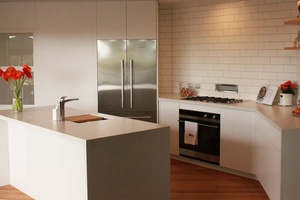
That period of reflection led me to a role as a receptionist and design assistant at De Bruin Judge Furniture, a high-end cabinetry firm (now known as DBJ Furniture). What started as a temporary six-month job turned into several years of hands-on experience. I worked my way up and became deeply involved in kitchen design, which is where I fell in love with interior detailing. It was in 2016, while designing and building my mum’s dream kitchen, I realised that no matter how much the kitchen was the heart of the home, I still dreamed about designing the whole house.
Within six months of completing mum’s kitchen, I transferred to the University of Auckland, where I completed both my Bachelor and Master of Architecture. My thesis was completed during the Covid-19 lockdown — another challenge that taught me a lot about perseverance and self-direction. Looking back, the path wasn’t linear, but every step gave me greater clarity on the kind of architect I want to be.
AH: What did you base your thesis on?
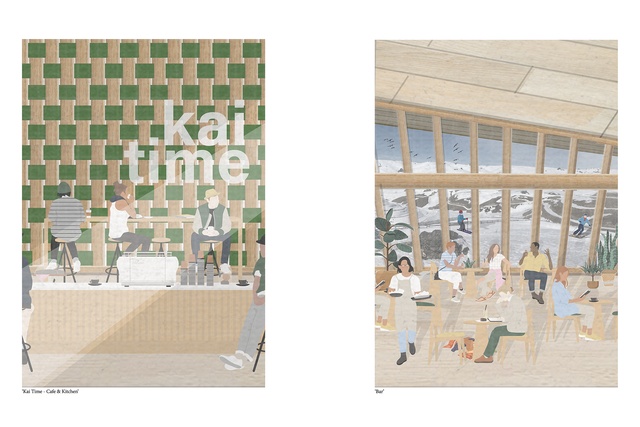
CD: My thesis explored how architecture can serve as a vehicle for cultural understanding and collaboration in Aotearoa. Titled Mahūtonga Whenua, the research investigated how I — as a Pākehā — could contribute meaningfully to a more inclusive built environment in Central Otago, a region where Māori narratives are often overlooked or misunderstood. With my thesis supervisor Bill McKay, I focused on redeveloping Snow Farm, a cross-country skiing and tramping facility in the Cardrona Valley, using it as a case study to explore how this recreational site could be redeveloped as a community facility that reflects a more inclusive Aotearoa New Zealand.
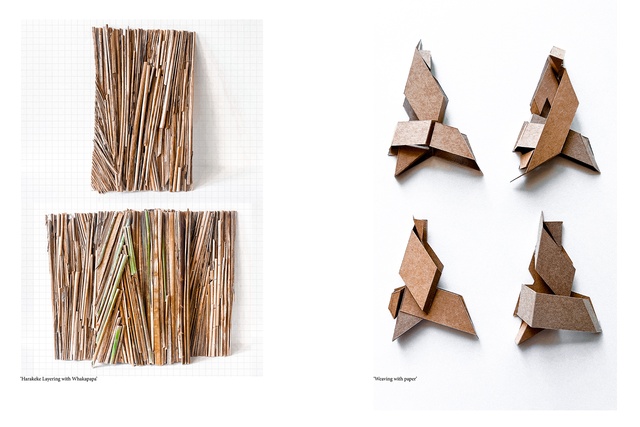
Centred on the concept which Anthony Hōete introduced to me, my thesis focused on the idea of trans-colonisation. It required deep personal reflection, learning my own whakapapa, pepeha and challenging my assumptions about cultural representation in design. Following the guiding principle of Turangawaewae, the design was led by weaving the site into its surrounding context, Iwi, Hapu, Maunga and Awa. At first, I wanted to use carving as a technique to design this thesis, however, through my research, I found that as a woman, in Māori culture, it was best practice for me to use weaving as a design methodology.
Ultimately, this work has helped me better understand my responsibilities under Te Tiriti o Waitangi and the importance of being an active, respectful ally in our architectural future. It’s a foundation which I have continued to build on throughout my career.
AH: What appeals to you about the field of architecture?
CD: What appeals to me most about architecture is its dynamic and ever-evolving nature — there’s always more to learn, and every project offers a new challenge or perspective. It’s a profession that sits at the intersection of creativity, problem-solving and human experience. Architecture is part of everyday life — whether big or small — and it has the power to be joyful, playful, comforting and even healing.
As mentioned, I’m especially drawn to the storytelling aspect of architecture — the way it can speak to people and place. The land we build on, and the communities we design for, give each project its own narrative.
AH: What is your approach to design and what inspires your practice?
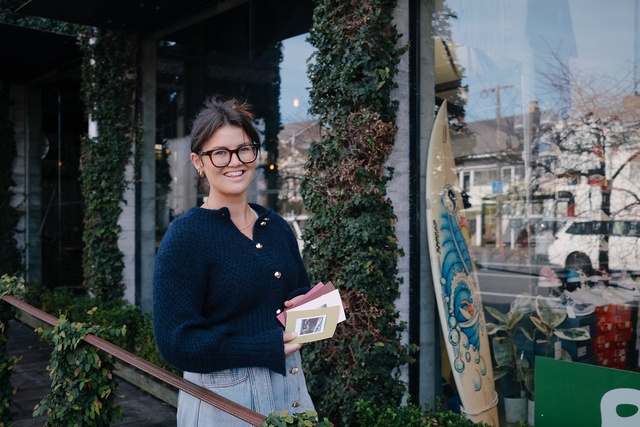
CD: My approach to design is grounded in experience — simply being present on site. I believe some of the most valuable lessons come from being in and reflecting on spaces: noticing what works, what doesn’t, and understanding how people move through, feel and interact with their environments.
Living in compact spaces since moving out of home has sparked a strong interest in apartment design, particularly in addressing the often-overlooked need for functional storage. My background in cabinetry has given me a unique perspective on spatial planning and detail resolution — blending the big picture with the practicalities that make everyday living easier.
Functionality (and storage) is a core driver in my process, but I also value the subtleties — light, texture and material — and how they come together to create something meaningful and memorable. Ultimately, I’m inspired by the balance of practicality and creativity, and by the belief that good design is rooted in thoughtful, human-centred outcomes.
AH: What area do you work in at Warren and Mahoney?
CD: At Warren and Mahoney, I’ve had the opportunity to gain experience across several sectors — including education, commercial and healthcare — but the Residential Team is where I’ve truly found my home. Over the past two years, I’ve been privileged to work within the Live Team, under the mentorship of some incredibly talented individuals, including Richard ‘Arch’ Archbold, Jonathan Hewlett and Kathryn ‘Kat’ Collins. Each of them has played a significant role in my development, generously sharing their knowledge and allowing me space to learn and grow.
One of the things I value most about working at WAM is the collaborative nature of our One Studio model — it means there’s always a wealth of expertise to draw from, and a willingness across the seven studios to support one another. It’s a highly motivating environment and I feel lucky to be surrounded by people who push me to be better every day.
AH: What would be a dream project?
CD: I’m really interested in exploring the more personal, hands-on side of architecture — and I’m just at the beginning stages of a project that reflects that. My brothers and I, who all work in the design and construction industry, are starting to collaborate on a special project designing and building a home for our parents to retire.
It’s a shift from the larger-scale, multi-stakeholder projects I’m used to but I’m excited by the opportunity to work on something smaller and deeply meaningful. I see it as a chance to be involved in every stage of the process — from early sketches to construction — and to reconnect with the tactile, grounded side of architecture — maybe get registered too? It’s also a way for me to explore how design can reflect family values, heritage and care in a very real and personal way.
AH: Are there any areas of design or practice you’d like to explore further?
CD: One area I’m passionate about exploring further is housing that prioritises people over profit — particularly models like Nightingale Housing in Melbourne. Their approach to delivering socially, environmentally and financially sustainable homes aligns closely with my own values around community-focused, human-centred design.
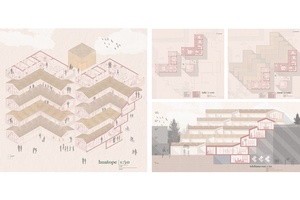
What I admire most is their commitment to fostering connection through shared spaces, reducing environmental impact through smart material and energy choices, and making quality housing more accessible through not-for-profit development. It’s a bold reimagining of how we live together — one that challenges the conventional housing model and makes space for equity, sustainability and community at its core.
As someone with a growing interest in apartment living and spatial efficiency, I’m especially curious about how we can adapt these principles to an Aotearoa context. I’d love to explore how similar design-led models could be implemented locally — creating homes that are not only beautiful and functional but also rooted in fairness and belonging.
AH: What do you find one of the most challenging aspects of working in architecture?
CD: One of the most challenging aspects of working in architecture is navigating the volatility of the industry — it’s closely tied to the economy, so when things slow down, the impact on projects, job security and practice morale can be significant. There’s also still a strong sense of competitiveness within the profession, which can sometimes get in the way of collaboration, particularly for younger practitioners trying to find their footing after leaving university.
As a woman in architecture, through my work with Architecture + Women I’ve also observed the systemic challenges that still exist — for example, there are a number of women who, even after gaining registration, have to go on voluntary suspension due to maternity leave. It’s a reminder that while those women who have come before me have made incredible progress and enabled me to be in the position I am today, there’s still work to be done to create a more equitable and sustainable profession — one where everyone can thrive long term.
AH: You are considerably involved in the wider sector, within networks such as Architecture + Women, Emerge and Te Kahui Whaihanga NZIA. Can you tell us what this participation means to you?
CD: Early in my career, someone told me, “It’s not what you know, it’s who you know,” and that advice encouraged me to step out of my comfort zone and get involved in the wider architecture community. Through my participation in SANNZ, Architecture + Women, Emerge and the NZIA, I’ve come to realise it’s about so much more than networking — it’s about actively supporting others to thrive and collectively shaping a better built environment. While there are still elements of competition in our industry, I firmly believe that architecture is not a solo sport — it requires collaboration, shared knowledge and a strong sense of community. Being part of these networks reminds me that progress is always stronger when it’s made together.
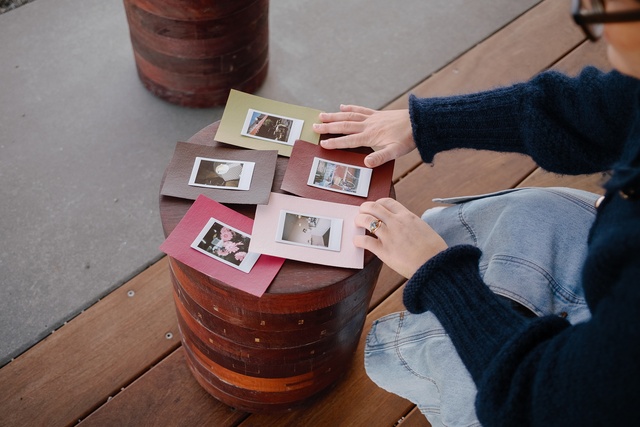
AH: Tell us about your mood board. What does it represent and how did you select the colours?
CD: Titled Postcards from Ponsonby, this Resene moodboard captures the bold spirit, vibrant personalities, and strong sense of community that define Ponsonby Road. Using Resene paints, I drew inspiration directly from the street — its colour, character and charm — by simply being present, walking its length and capturing observing its everyday beauty. Polaroid imagery became my way of documenting those spontaneous moments: a pop of maroon on a heritage shopfront, the soft pink of an interior or the deep green of mature street trees. This exercise reflects how I approach design — grounded in place, people and presence.
The colours selected are Resene Brown Pod (coffee), Resene Persian Red (tattoo shop), Resene Paper Doll (ice cream), Resene Lip Service (dahlias at the dairy) and Resene Wasabi (green restaurant chairs).
See more from the On the Rise series here.


